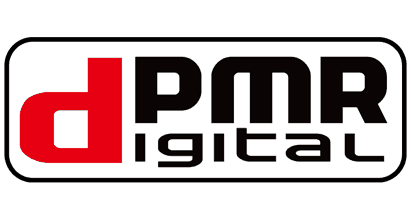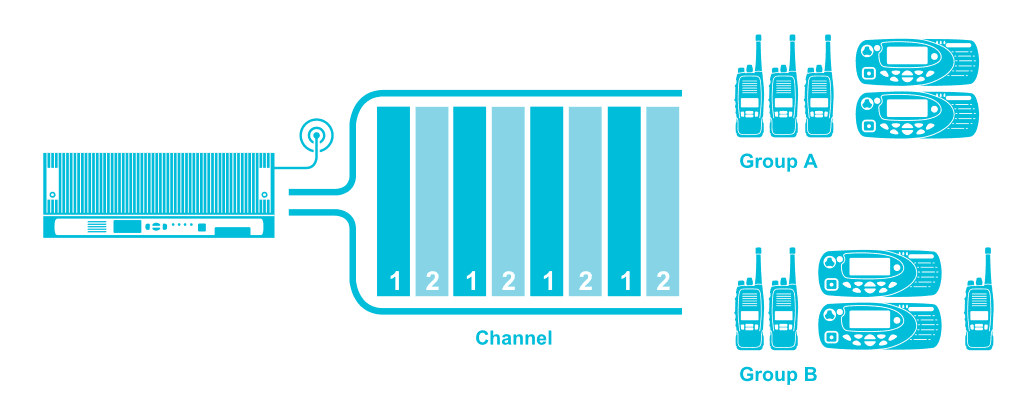
Last week’s post on open digital radio standards reveals that the major difference between DMR and dPMR is the choice of multiple access scheme. DMR uses 2-slot TDMA to achieve two communication paths per 12.5kHz channel, whereas dPMR uses FDMA to divide the 12.5kHz channel in to two 6.25kHz sub-channels.
Therefore, the comparison of these two systems very much comes down to understanding the relative advantages and disadvantages of TDMA versus FDMA.
In theory there appears to be little difference. In Spectral Efficiency terms, both achieve 6.25kHz channel equivalence. Coverage-wise, the modulation methods and symbol rates mean coverage would be almost identical to existing narrowband FM systems in both cases. While the resulting radio signals do look quite different (DMR appears similar to narrowband FM, whereas the dPMR signal appears as two individual signals each with 6.25kHz bandwidth), both fit within existing 12.5kHz narrowband FM channels. So the choice of frequency bands may be made according to the application and terrain to be covered.
Ease of migration from existing analog systems
The obvious difference is the ease of migration from analog systems. With DMR, because the TDMA slots are operating on the same frequency, the resulting infrastructure is much the same as for a narrowband FM system, effectively reducing the cost of system infrastructure. In effect, you only need one repeater, one antenna and a simple duplexer, as shown in the diagram below.

TDMA DMR system representation
Contrast this with infrastructure for an FDMA dPMR system. As both 6.25kHz sub-channels must operate simultaneously, two repeaters (one for each 6.25kHz sub-channel) are required, plus expensive combining equipment for multiple frequencies to share the single base station/repeater antenna, as shown below.

FDMA dPMR system representation
FDMA infrastructure costs are considerably higher than for 2-slot TDMA DMR. In addition, the losses of the extra combiners may require additional RF Power Amplifiers to maintain the transmitted power level and therefore coverage.
To summarize, 2-slot TDMA DMR makes efficient use of expensive infrastructure and simplifies migration. Compared to FDMA, 2-slot TDMA allows you to achieve 6.25kHz efficiency while reducing investment in repeaters and combining equipment. Much of the combining equipment used in the previous analog FM system can be re-used by a new DMR network.
This is the obvious advantage of a TDMA system such as DMR, over an equivalent FDMA counterpart like dPMR. However, if we look beneath the surface, other differences appear that have consequences in terms of other assessment criteria, which we will cover over the next few weeks.
For a basic overview of FDMA vs TDMA, watch our short Radio Academy video here. 
To get updates as our posts get published, subscribe via email below:
Email Address



